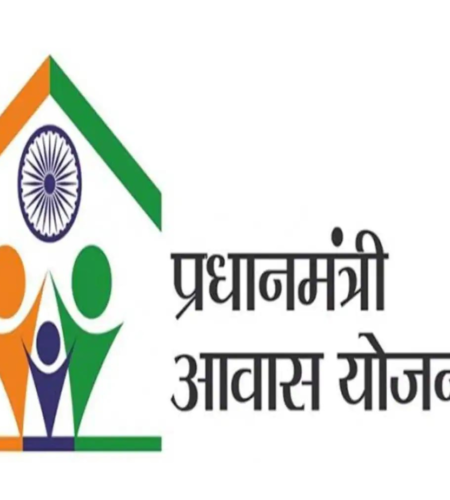The Pradhan Mantri Awas Yojana (PMAY), launched in 2015 by the Government of India, has been a flagship initiative aimed at providing affordable housing for all. As the scheme continues to evolve, PM Awas Yojana 2026 represents the next phase in the government’s long-term mission to ensure that every Indian has access to safe, secure, and dignified housing. With ambitious goals, enhanced features, and targeted support for vulnerable communities, the 2026 iteration is set to make a significant impact on urban and rural housing in India.
This article provides a comprehensive overview of PM Awas Yojana 2026, including its objectives, eligibility criteria, components, benefits, and how to apply.
Overview of PM Awas Yojana
PM Awas Yojana was launched with the aim of achieving “Housing for All” by 2022. While considerable progress was made, the scale of housing need meant the government extended the program’s timeline. PM Awas Yojana 2026 now continues under renewed objectives, with the 2026 phase aiming to fill critical gaps in urban and rural housing infrastructure.
PMAY has two main components:
- PMAY-U (Urban): For the urban poor including slum dwellers.
- PMAY-G (Gramin): For people in rural areas who are either homeless or living in inadequate housing.
Key Objectives of PM Awas Yojana 2026
- Affordable Housing for All: Ensure that every Indian family, especially the economically weaker sections, has access to a pucca (permanent) house.
- Slum Rehabilitation: Upgrade and rehabilitate slum dwellers through public-private partnerships.
- Financial Support and Subsidy: Provide credit-linked subsidies to eligible beneficiaries for new construction or home improvement.
- Promote Sustainable Development: Encourage eco-friendly building materials and energy-efficient construction techniques.
- Empowering Women and Marginalized Groups: Ensure that women are co-owners of the property and that marginalized communities are prioritized.
What’s New in PMAY 2026?
PMAY 2026 builds upon the previous versions of the scheme and introduces several new features to improve effectiveness:
- Increased Budget Allocation: A significant increase in the budget to accelerate construction and meet rising demand.
- Revised Income Criteria: Updated income limits for various beneficiary categories to reflect inflation and cost of living.
- Enhanced Credit Subsidy: Higher interest subsidies for beneficiaries under Credit Linked Subsidy Scheme (CLSS).
- Smart Home Features: Incentives for including solar panels, rainwater harvesting, and energy-efficient appliances.
- Faster Approval Mechanisms: Streamlined processes for faster approval and disbursement using digital platforms.
Eligibility Criteria
To avail of benefits under PMAY 2026, applicants must meet the following eligibility conditions:
For PMAY-U (Urban):
- Beneficiary family must not own a pucca house in any part of India.
- Must belong to one of the following income groups:
- Economically Weaker Section (EWS): Income up to ₹3 lakh/year
- Lower Income Group (LIG): ₹3–6 lakh/year
- Middle Income Group-I (MIG-I): ₹6–12 lakh/year
- Middle Income Group-II (MIG-II): ₹12–18 lakh/year
- Economically Weaker Section (EWS): Income up to ₹3 lakh/year
- Female ownership or co-ownership is mandatory for EWS and LIG categories.
- Applicants must not have availed housing benefits under any other government scheme.
For PMAY-G (Rural):
- Must be a homeless family or living in a kutcha/dilapidated house.
- Should be listed in the Socio-Economic and Caste Census (SECC) 2011 data.
- Priority given to SC/ST, minorities, and female-headed households.
Components of PM Awas Yojana 2026
PMAY 2026 consists of four major verticals:
1. In-situ Slum Redevelopment (ISSR)
Rehabilitation of slum dwellers using land as a resource through private participation.
2. Credit Linked Subsidy Scheme (CLSS)
Provides interest subsidy on home loans for purchase, construction, extension, or improvement of a house.
| Income Group | Interest Subsidy | Loan Limit | Max Subsidy |
| EWS/LIG | 6.5% | ₹6 lakh | ₹2.67 lakh |
| MIG-I | 4% | ₹9 lakh | ₹2.35 lakh |
| MIG-II | 3% | ₹12 lakh | ₹2.30 lakh |
3. Affordable Housing in Partnership (AHP)
Provides central assistance to private developers for constructing affordable homes in partnership with states/UTs.
4. Beneficiary-led Construction (BLC)
Assistance for individuals to construct or enhance their existing homes.
How to Apply for PM Awas Yojana 2026
Online Application:
- Visit the official PMAY website:
- Select “Citizen Assessment” and choose the appropriate category.
- Enter Aadhaar number and verify.
- Fill in personal, income, and housing details.
- Submit the form and take a printout of the acknowledgment.
Offline Application:
Applicants can also visit:
- Common Service Centers (CSCs)
- Municipal offices or Panchayat offices
Bring essential documents such as:
- Aadhaar card
- Income certificate
- Residence proof
- Property documents (if applicable)
- Bank account details
Progress and Impact So Far
As of mid-2025, the PMAY scheme has:
- Sanctioned over 3 crore houses under both urban and rural components.
- Completed construction of over 2.5 crore houses.
- Generated millions of jobs in the construction and allied sectors.
- Empowered women by mandating ownership or co-ownership of property.
With the launch of PMAY 2026, the target is to add an additional 80 lakh homes by the end of the year, focusing on the most underserved regions.
Challenges and Road Ahead
While PMAY has achieved notable success, challenges remain:
- Land availability in urban areas.
- Delayed fund disbursement in some states.
- Capacity constraints in rural construction.
- Quality control and monitoring issues.
To address these, PMAY 2026 incorporates:
- Use of technology platforms for monitoring.
- Encouragement of green building practices.
- Collaboration with private developers and NGOs.
- State-level innovations under the “Model State Partnership Framework.”
Conclusion
PM Awas Yojana 2026 is a pivotal step in India’s journey toward inclusive development and improved living standards. With expanded scope, improved subsidy benefits, and a strong digital framework, the scheme aims to bring millions closer to the dream of owning a safe and affordable home.
For millions of families, especially in rural and low-income urban areas, PMAY 2026 is not just a housing scheme—it’s a gateway to dignity, security, and opportunity. As the government, private sector, and citizens work in tandem, India moves one step closer to ensuring that no one is left behind in the quest for shelter.
Read more: Your Guide to Explore Loan Options That Fit Your Needs – The Funny Puns
How 91 Club Is Innovating the Gaming Scene
How Better Estimating Can Improve Profit Margins in Construction


Comments